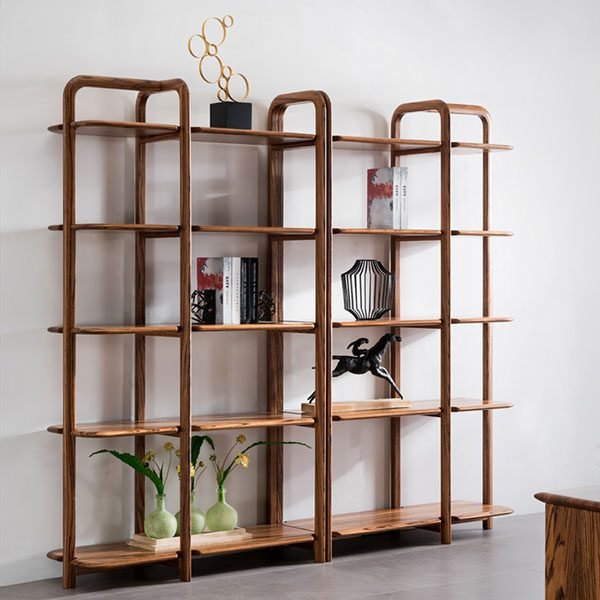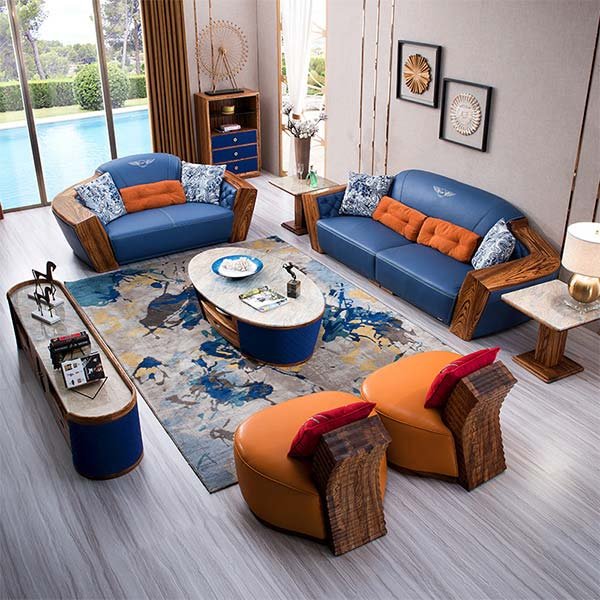“Discover the timeless charm of vintage wicker furniture, where history meets craftsmanship.”
Types of vintage wicker furniture
Types of Vintage Wicker Furniture
Wicker furniture has been a popular choice for many homeowners due to its timeless appeal and durability. Vintage wicker furniture, in particular, holds a special charm and can add a touch of nostalgia to any space. However, identifying authentic vintage wicker furniture can be a challenge. In this article, we will explore the different types of vintage wicker furniture and provide tips on how to identify them.
One of the most common types of vintage wicker furniture is the rattan chair. Rattan is a type of palm that is known for its flexibility and strength, making it an ideal material for furniture. Rattan chairs often feature intricate weaving patterns and can be found in various styles, such as Victorian, Art Deco, and Mid-Century Modern. These chairs are typically lightweight and have a natural, earthy appearance.
Another type of vintage wicker furniture is the wicker sofa. Wicker sofas are larger pieces of furniture that can accommodate multiple people. They are often made from a combination of rattan and other materials, such as bamboo or cane. Wicker sofas can be found in different shapes and styles, including curved designs and straight lines. They are known for their comfort and can be a focal point in any living room or outdoor space.
Vintage wicker tables are also highly sought after by collectors and enthusiasts. These tables can come in various shapes and sizes, including coffee tables, side tables, and dining tables. They are often made from rattan or bamboo and feature intricate weaving patterns on the tabletop. Vintage wicker tables can add a touch of elegance to any room and are perfect for displaying decorative items or serving as functional pieces of furniture.
In addition to chairs, sofas, and tables, vintage wicker furniture also includes other pieces such as cabinets, shelves, and baskets. These items are often used for storage purposes and can be found in different sizes and styles. Vintage wicker cabinets and shelves can be a great addition to any kitchen or bathroom, providing both functionality and aesthetic appeal. Wicker baskets, on the other hand, can be used for organizing and storing various items, such as magazines, toys, or laundry.
When it comes to identifying vintage wicker furniture, there are a few key factors to consider. First, examine the weaving pattern. Vintage wicker furniture often features intricate and detailed weaving patterns, whereas modern reproductions may have simpler designs. Additionally, look for signs of wear and tear. Authentic vintage wicker furniture will show signs of age, such as faded colors or worn-out areas. Finally, check for any labels or markings that indicate the manufacturer or the time period in which the piece was made.
In conclusion, vintage wicker furniture comes in various types and styles, including chairs, sofas, tables, cabinets, shelves, and baskets. These pieces are known for their intricate weaving patterns and timeless appeal. When identifying vintage wicker furniture, pay attention to the weaving pattern, signs of wear and tear, and any labels or markings. By understanding the different types of vintage wicker furniture and knowing what to look for, you can confidently add a touch of nostalgia to your home.
Tips for identifying authentic vintage wicker furniture
Wicker furniture has been a popular choice for many homeowners due to its timeless appeal and durability. However, not all wicker furniture is created equal, and if you’re in the market for authentic vintage pieces, it’s important to know how to identify them. In this article, we will provide you with some tips for identifying authentic vintage wicker furniture.
Firstly, it’s important to understand what vintage wicker furniture actually is. Vintage refers to items that are at least 20 years old, while antique refers to items that are at least 100 years old. So, when looking for vintage wicker furniture, you should be searching for pieces that were made at least two decades ago.
One of the first things to look for when trying to identify authentic vintage wicker furniture is the material used. Authentic vintage wicker furniture is typically made from natural materials such as rattan, bamboo, or reed. These materials are known for their strength and flexibility, which is why they have been used for centuries to create wicker furniture. Synthetic materials such as plastic or resin were not commonly used in vintage wicker furniture, so if you come across a piece that is made from these materials, it is likely not authentic vintage.
Another important factor to consider is the construction of the furniture. Authentic vintage wicker furniture is usually handcrafted and will have intricate weaving patterns. Look for tight and even weaves, as this is a sign of quality craftsmanship. Additionally, check for any signs of wear or patina, as this can indicate that the piece has been around for a while.
Next, pay attention to the style and design of the furniture. Vintage wicker furniture often features unique and intricate designs that reflect the time period in which they were made. Look for details such as curved lines, ornate patterns, and decorative accents. These elements can give you clues about the era in which the furniture was produced.
Furthermore, it’s important to consider the overall condition of the furniture. While some signs of wear and tear are expected with vintage pieces, excessive damage or repairs can indicate that the furniture is not authentic vintage. Look for any signs of repairs, such as glue or nails, as these can be indications that the piece has been altered or restored.
Lastly, do your research and consult experts if needed. There are many resources available online and in books that can help you learn more about vintage wicker furniture and its characteristics. Additionally, if you’re unsure about the authenticity of a piece, consider reaching out to antique dealers or appraisers who specialize in wicker furniture. They can provide you with valuable insights and help you make an informed decision.
In conclusion, identifying authentic vintage wicker furniture requires attention to detail and knowledge about the materials, construction, style, and condition of the pieces. By familiarizing yourself with these factors and doing thorough research, you can confidently identify and purchase authentic vintage wicker furniture for your home. Remember, the charm and history that comes with vintage pieces can add a unique touch to your living space.
Common signs of wear and tear in vintage wicker furniture
Vintage wicker furniture can add a touch of charm and character to any home. Whether you’re a collector or simply appreciate the beauty of these pieces, it’s important to know how to identify the signs of wear and tear in vintage wicker furniture. This will help you make informed decisions when purchasing or restoring these timeless pieces.
One common sign of wear and tear in vintage wicker furniture is fraying or unraveling of the wicker strands. Over time, the natural fibers used in wicker furniture can become brittle and break, leading to frayed edges or loose strands. This can be especially noticeable in areas that receive a lot of use, such as the seat or armrests. If you come across a piece with frayed wicker, it’s important to assess the extent of the damage and determine if it can be repaired.
Another sign of wear and tear in vintage wicker furniture is discoloration or fading of the wicker material. Exposure to sunlight and other environmental factors can cause the natural color of wicker to fade over time. This can result in a patchy or uneven appearance, with some areas appearing lighter or darker than others. While some people may appreciate the aged look of faded wicker, others may prefer to restore the original color. If you’re considering restoring a piece with faded wicker, it’s important to research the appropriate methods and materials to ensure a successful outcome.
In addition to fraying and fading, vintage wicker furniture may also show signs of damage from pests or moisture. Pests such as termites or ants can infest wicker furniture, causing structural damage and weakening the overall integrity of the piece. Moisture can also be detrimental to wicker, causing it to warp or develop mold and mildew. When inspecting vintage wicker furniture, be sure to check for any signs of pest infestation or water damage, such as holes, soft spots, or a musty odor. If you come across any of these issues, it’s important to address them promptly to prevent further damage.
Furthermore, the overall condition of the frame and weaving should be assessed when identifying wear and tear in vintage wicker furniture. The frame should be sturdy and free from any cracks or breaks. The weaving should be tight and secure, with no loose or missing strands. It’s also important to check the joints and connections for any signs of weakness or instability. If the frame or weaving is compromised, it may be necessary to seek professional restoration or consider the cost of repairs before purchasing the piece.
In conclusion, identifying the signs of wear and tear in vintage wicker furniture is essential for collectors and enthusiasts alike. By paying attention to fraying, fading, pest damage, moisture damage, and the overall condition of the frame and weaving, you can make informed decisions when purchasing or restoring these timeless pieces. Remember to thoroughly inspect any potential purchases and consider the cost and feasibility of repairs before making a final decision. With proper care and maintenance, vintage wicker furniture can continue to bring beauty and charm to your home for years to come.
Заключение
Заключение: Для определения винтажной мебели из искусственного ротанга можно обратить внимание на следующие признаки:
1. Материал: Винтажная мебель из искусственного ротанга обычно изготавливалась из натуральных материалов, таких как ротанг, ротанговые волокна или бамбук. Она может иметь небольшие повреждения или потертости, что придает ей старинный вид.
2. Конструкция: Винтажная мебель из искусственного ротанга обычно имеет прочную и тщательно выполненную конструкцию. Обратите внимание на детали соединений и качество изготовления.
3. Стиль: Винтажная мебель из искусственного ротанга может иметь характерные стили и дизайн, которые были популярны в прошлом, такие как ретро или колониальный стиль.
4. Маркировки: Поиск маркировок или этикеток на мебели может помочь определить ее возраст и происхождение. Некоторые производители могли наносить свои логотипы или маркировки на изделия.
5. Исследование: Проведите исследование о производителях и стилях винтажной мебели из искусственного ротанга. Это поможет вам лучше понять характеристики и особенности такой мебели и сделать более точные выводы о ее возрасте и подлинности.



